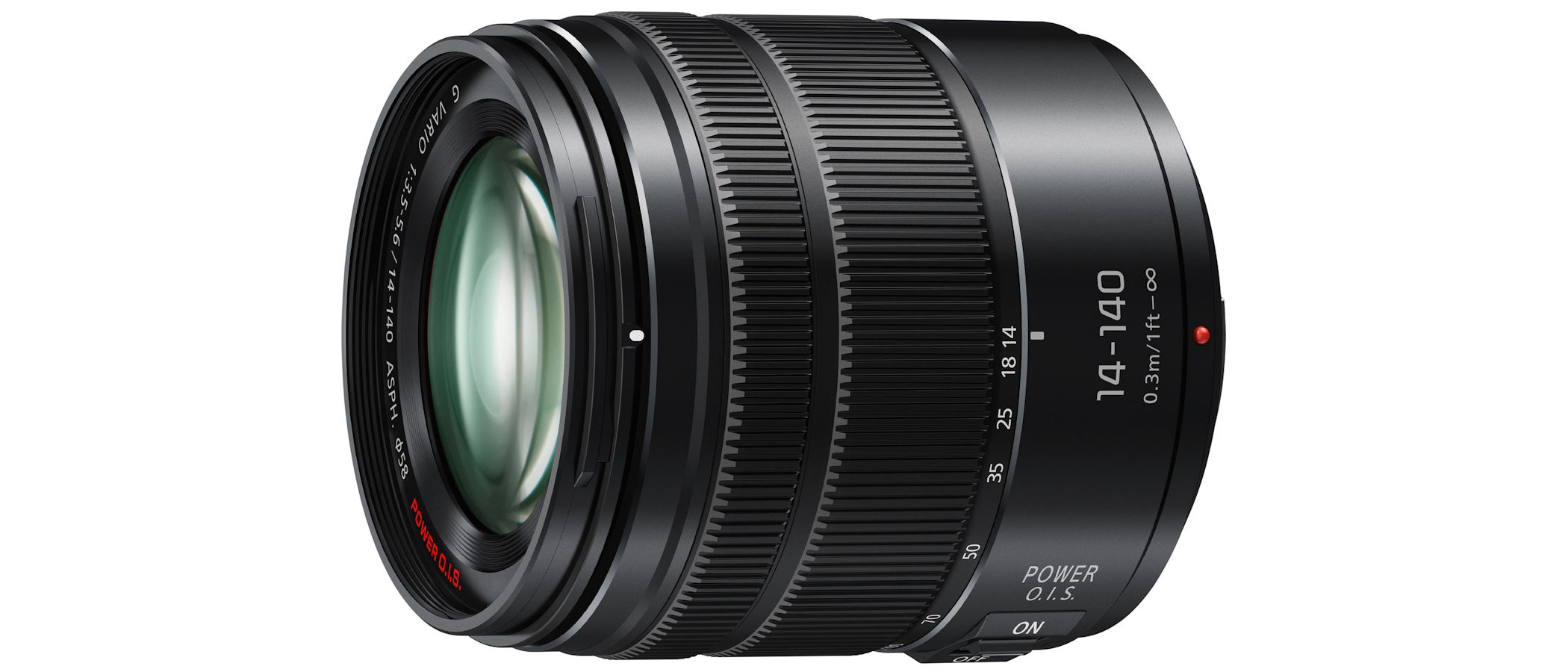Digital Camera World Verdict
Combining a powerful 10x zoom range, equivalent to 28-280mm in full-frame terms, with a none too sluggish aperture rating and optical image stabilization, this Panasonic weighs in at just 265g. It’s ideal as a casual walkabout and travel lens for Micro Four Thirds cameras, enabling you to react instantly to almost any photo opportunity without carrying multiple lenses of a tripod. Performance is good overall mid- to long-zoom sharpness could be better.
Pros
- +
Generous 10x zoom range
- +
Compact and lightweight
- +
Optical image stabilization
Cons
- -
Fairly basic build and handling
- -
No AF/MF switch
- -
Unimpressive mid/long-zoom sharpness
Why you can trust Digital Camera World
The Panasonic Lumix G Vario 14-140mm f3.5-5.6 II ASPH Power OIS goes into direct competition with the Olympus M.Zuiko Digital ED 14‑150mm f/4‑5.6 II. Both aim to combine a generous ‘superzoom’ range of focal lengths with a small and lightweight build, making them ideal for use as travel lenses.
Specifications
Mount: Micro Four Thirds
Full frame: No
Autofocus: Yes
Stabilization: Yes
Lens construction: 14 elements in 12 groups
Angle of view: 75-8.8 degrees
Diaphragm blades: 7
Minimum aperture: f/22
Minimum focusing distance: 0.3m
Maximum magnification ratio: 0.25x
Filter size: 58mm
Dimensions: 67x75mm
Weight: 265g
Key features
Weighing in at just 265g and measuring 75mm in length, this Panasonic lens is even lighter and smaller than the competing Olympus superzoom, which is 285g and 83mm long. It’s also slightly shorter in maximum focal length, equivalent to 280mm instead of 300mm on Micro Four Thirds cameras, but adds optical stabilization. Panasonic claims a 2x improvement in its ‘Power’ Vs ‘Mega’ optical image stabilization system. The addition isn’t just good news for owners of Panasonic cameras with no in-body stabilizers, as it gives the choice of whether to use optical or sensor-shift stabilization with stabilized MFT bodies.
Build quality feels pretty solid despite the lightweight design and features a dust- and splash-proof construction. The optical path features three aspherical elements, two ED (Extra-low Dispersion) elements and multi-coatings. The stepping motor autofocus system is pretty swift, virtually silent and suitable enables smooth transitions for movie capture. As usual with this type of system, manual focusing is an electronic ‘fly-by-wire’ affair and works with smooth precision.
Performance
There’s a dip in sharpness in the middle of the zoom range but it’s pretty good at either end. Sharpness in handheld telephoto shots gets a boost from the optical stabilizer, which gives a benefit of about three and a half stops. Tests from our OM-D E-M1 revealed distortions to be slightly more noticeable than from the Olympus lens but still well controlled, along with minimal color fringing.
Lab results
We run a range of lab tests under controlled conditions, using the Imatest Master testing suite. Photos of test charts are taken across the range of apertures and zooms (where available), then analyzed for sharpness, distortion and chromatic aberrations.
We use Imatest SFR (spatial frequency response) charts and analysis software to plot lens resolution at the center of the image frame, corners and mid-point distances, across the range of aperture settings and, with zoom lenses, at four different focal lengths. The tests also measure distortion and color fringing (chromatic aberration).
Sharpness:
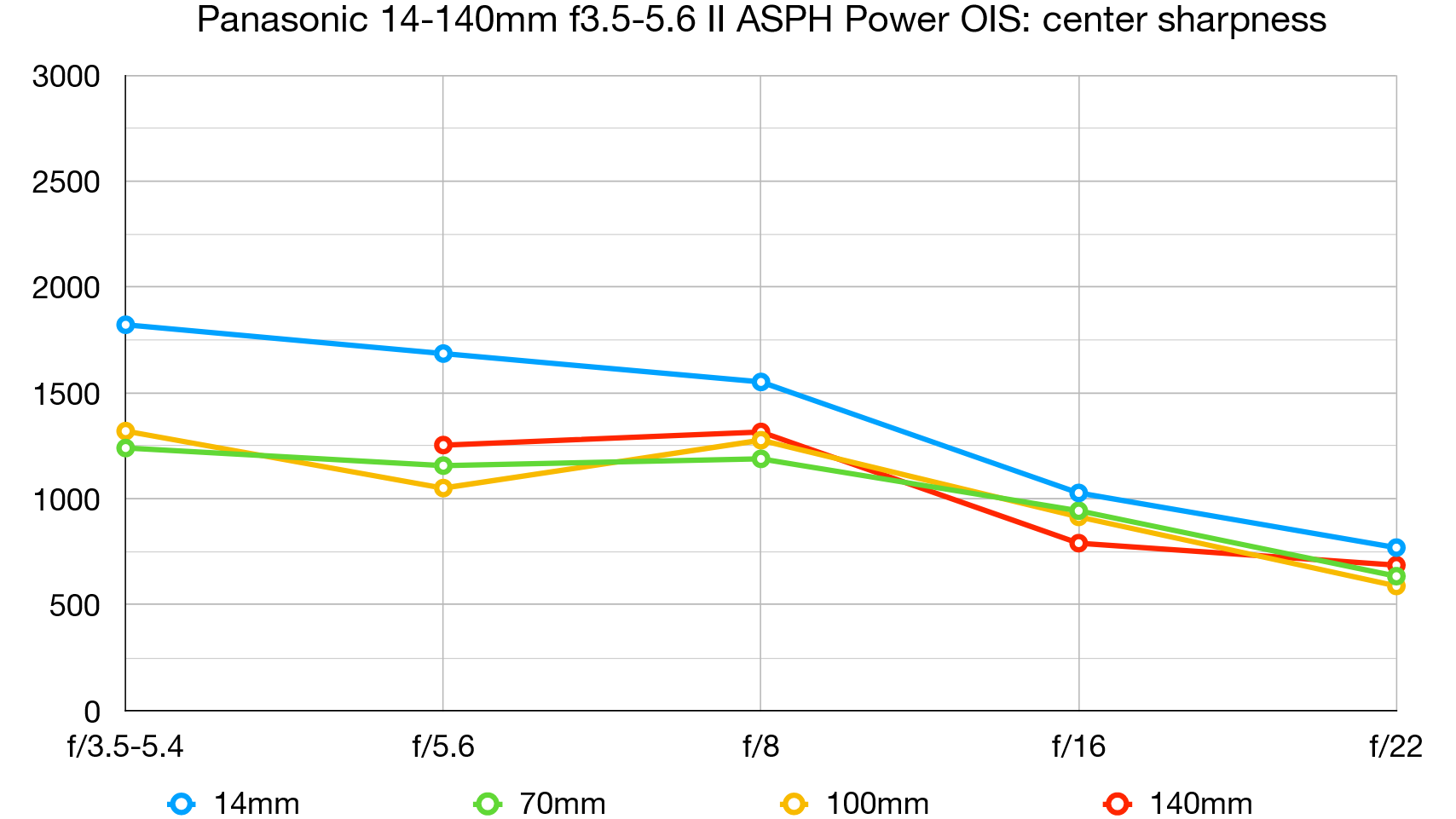
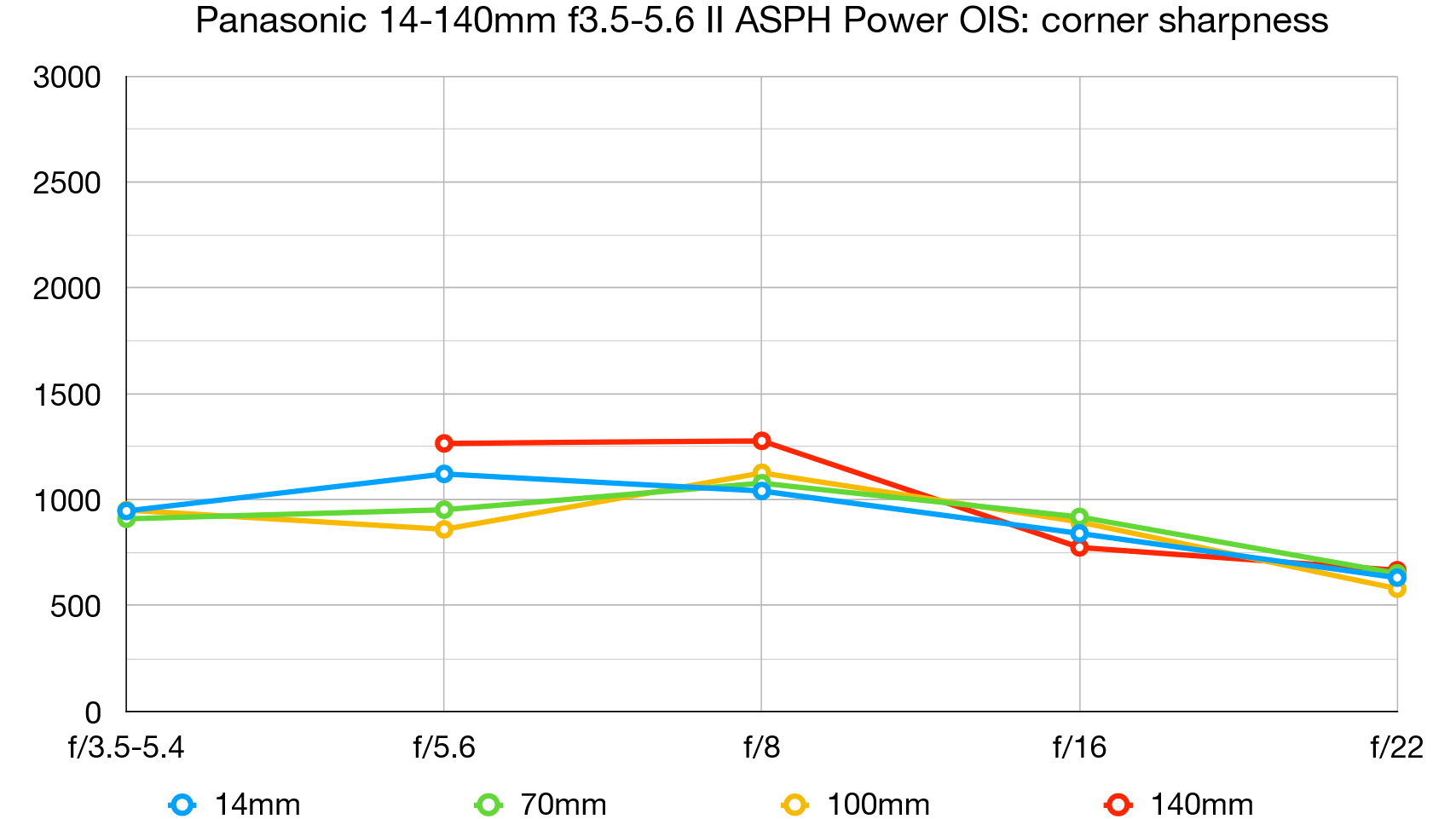
Levels of center-sharpness start off very well at the shortest 14mm zoom setting but it’s a downhill slope all the way to 140mm at the long end. Edge-sharpness is reasonably good at all focal lengths, especially is stopping down the aperture a little.
Fringing:
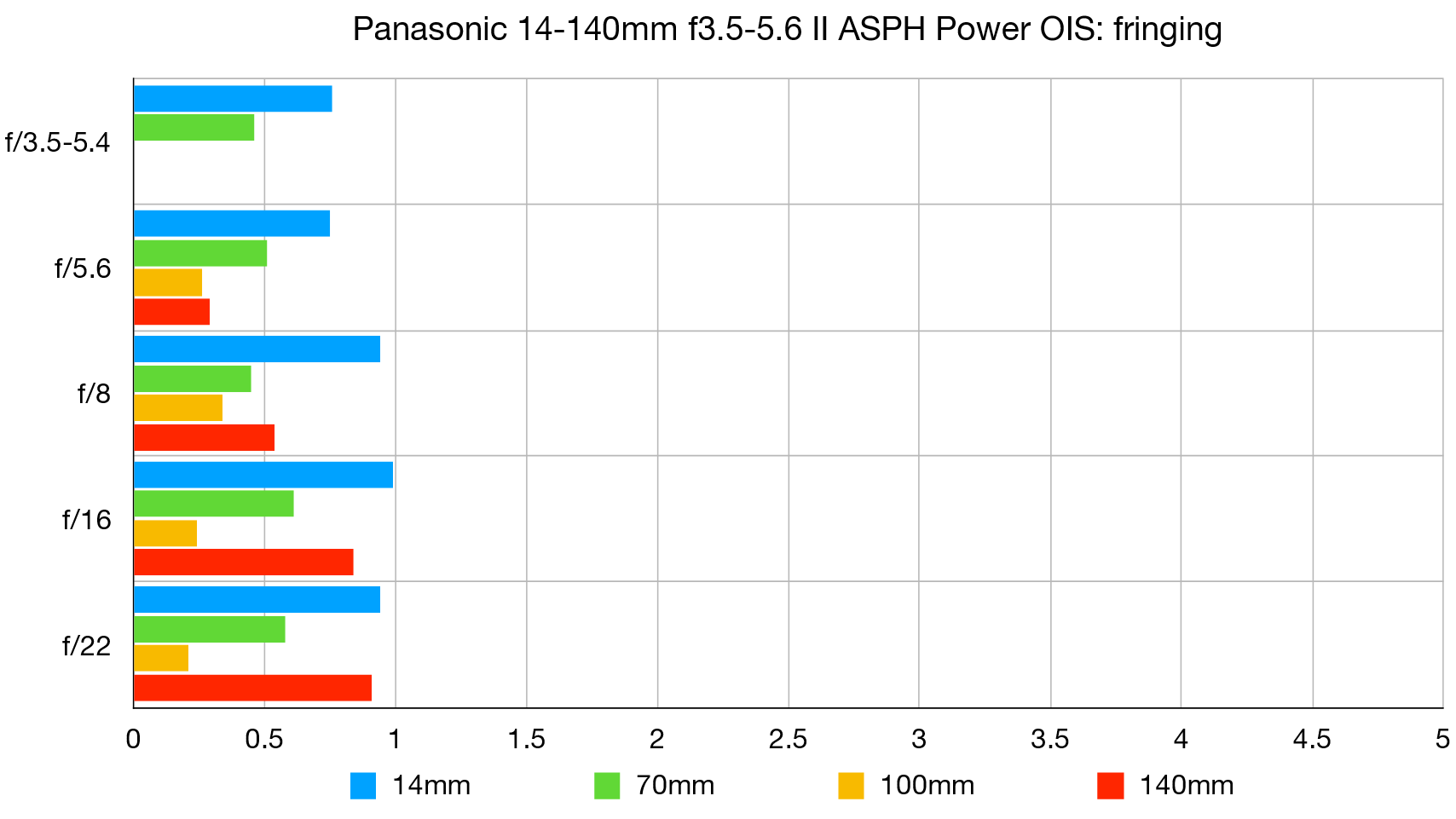
With a boost from automatic in-camera correction, control over color fringing is highly effective.
Distortion:
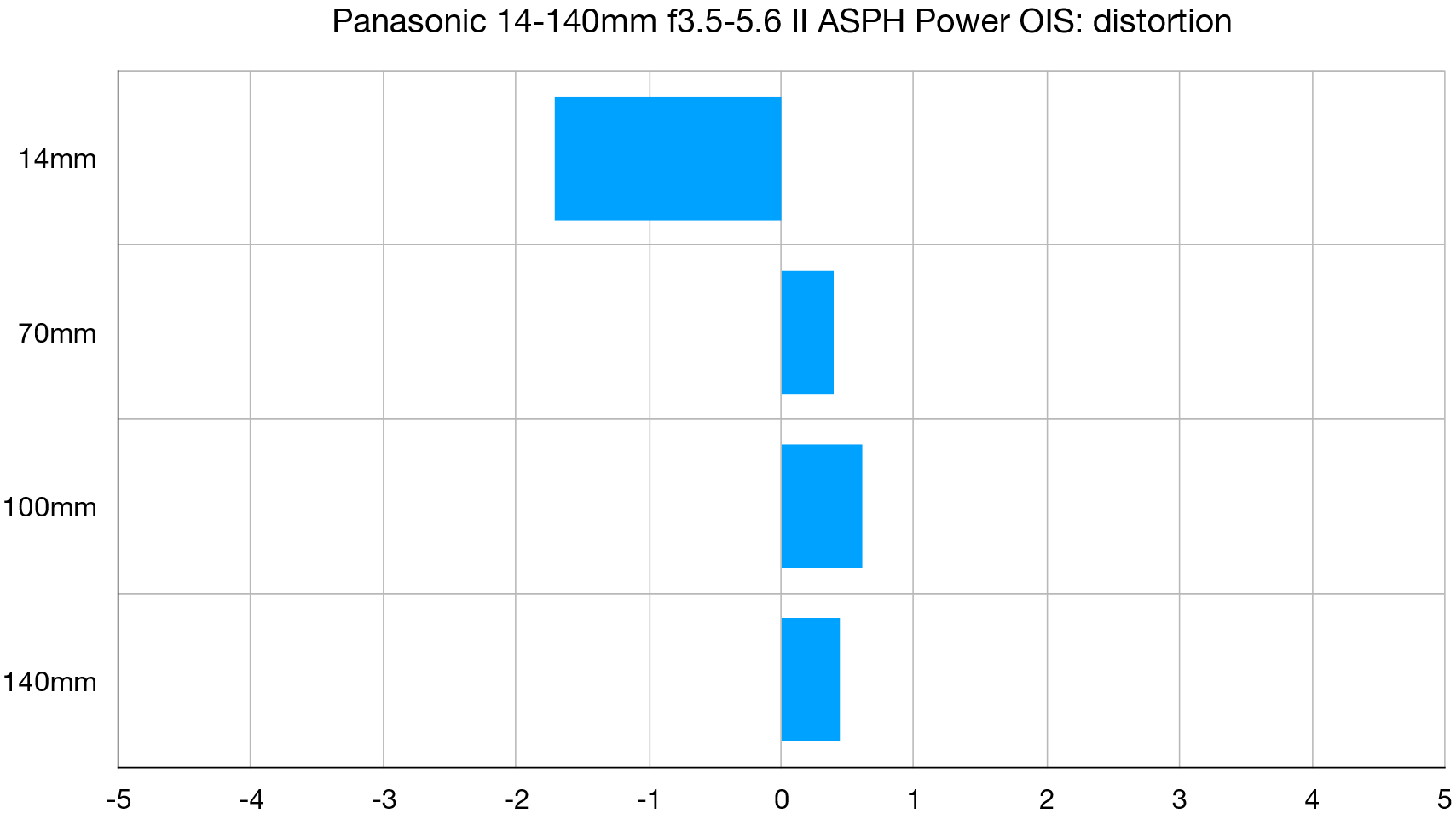
Automatic in-camera correction can’t be disabled but the net outcome is fairly low barrel distortion at 14mm and very slight pincushion at medium to long zoom settings.
Verdict
Combining a powerful 10x zoom range, equivalent to 28-280mm in full-frame terms, with a none too sluggish aperture rating and optical image stabilization, this Panasonic weighs in at just 265g. It’s ideal as a casual walkabout and travel lens for Micro Four Thirds cameras, enabling you to react instantly to almost any photo opportunity without carrying multiple lenses of a tripod. Performance is good overall sharpness could be better.
Read more:
• Best camera lenses to get
• Best Canon lenses
• Best Nikon lenses
• Best Sony lenses
Matthew Richards is a photographer and journalist who has spent years using and reviewing all manner of photo gear. He is Digital Camera World's principal lens reviewer – and has tested more primes and zooms than most people have had hot dinners!
His expertise with equipment doesn’t end there, though. He is also an encyclopedia when it comes to all manner of cameras, camera holsters and bags, flashguns, tripods and heads, printers, papers and inks, and just about anything imaging-related.
In an earlier life he was a broadcast engineer at the BBC, as well as a former editor of PC Guide.
